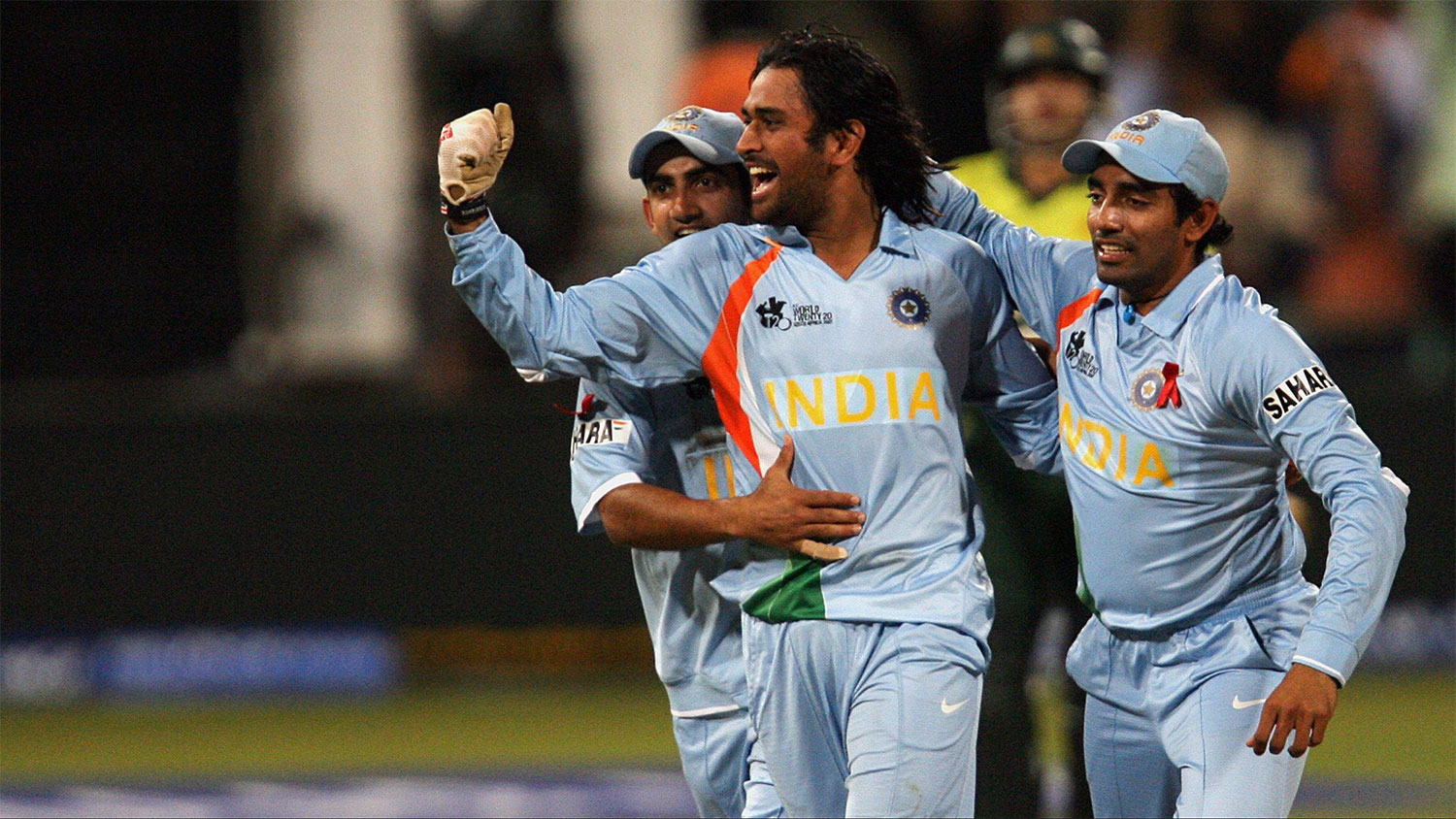Leadership & Teamwork
LEADERSHIP, DHONI STYLE
“Leadership is the art of getting someone else to do something you want done because he wants to do it.” - Dwight Eisenhower

When the T20 Cricket World Cup was inaugurated India didn’t stand much chance of emerging as champions. Perhaps no one, including Dhoni and his men, had envisioned winning the Cup, but history was created. A victory that can be attributed to total team effort from the Indian side. The man who led the team to success was none other than the captain Mahendra Singh Dhoni.
Dhoni, is a natural leader, innovative and lively, a swashbuckler with a brain, a gambler who takes calculated risks. He has faith in his team, wants them to enjoy their game, be aggressive and have a killer instinct. In a short span of time his charisma has enabled him to coax fine performances from his players and also earn their respect.
LET US EVALUATE SOME OF HIS POST MATCH COMMENTS:
"After defeating Australia, I told the boys to enjoy themselves. I told them that the Australians are the world champions, let them do the thinking, let them innovate. We just need to deliver the balls in the right spot and the pitch will do the rest."
These words project Dhoni as a leader, who understands that fun, while working, was needed for the team who really enjoyed themselves keeping stress and pressure at bay and achieved some incredible results. His comments also suggest that without being daunted by the opposition, he wants his team to concentrate on the basics for success.
After winning against Pakistan, Bhajji was not 100 per cent sure of bowling yorkers in the death overs. “I thought I should throw the ball to someone who really wants to do well in international cricket.” This statement reinforces Dhoni’s faith in youngsters and his attempt to back them up.
He added, “Joginder did a really good job and even if he had conceded the required runs to Pakistan I would not have rued the decision.” These words brought clarity to the team that this captain would back you, no matter what the result and still make you feel like a winner.

Let us focus on one of his on-field decisions in the final match against Pakistan. While watching this match on TV, I heard one of the commentators criticize Dhoni’s decision to let Joginder Sharma bowl from one end and Yusuf Pathan from the other, instead of bringing in Irfan Pathan. He stressed on the need of wickets and not on containing the batsman. Eventually, Dhoni’s decision paid off as the two bowlers of his choice slowed the scoring rate, thereby increasing pressure. When the batsmen later encountered Irfan Pathan, they took chances and got out. This clearly projects that leadership is not about popular decisions, but about taking risks and taking the opposition by surprise.
During Irfan Pathan’s over, Dhoni stayed close to the stumps while keeping wickets for a spinner. That needed guts because a miss on his part could earn the opposition an easy boundary behind wickets. But his move paid off. The batsmen got tied down and stayed at the crease for fear of being stumped and when they took their chances and lofted the ball in the air, they got out. This act by Dhoni showed him as a tactician, who wants to be innovative and get results through positive aggression.
In the semi-final match against Australia, he played a slow and steady innings of 40-odd-runs, very unlike his signature style of batting. He was composed, not giving away his wicket to poor shots, waiting for the right deliveries and sweeping them to the boundary line. However, soon after that inning, a lot of people watching him said that he was giving in to the pressure of captaincy and not playing as he normally would. The final result — India won the match making his inning crucial for the victory. Analyzing this act of Mahi, you notice a level-headed leader who knows how to shift gears and be flexible.
If we look at some general characteristics, you would notice that Dhoni carries with him the spirit of a champion. Great leaders like Abraham Lincoln and Mahatma Gandhi always walked fast. Research shows that fast walkers think and act fast.
Dhoni’s entry and exit on the ground is worth watching. He almost storms to the pitch to bat and leaves briskly upon dismissal. This shows he is a man on a mission.
He has a smile on his face even in difficult situations. In the match against England, he tossed the gloves to Dinesh Kartik and placed himself at mid-off position. He laughed at himself after a misfield and his teammates laughed with him. It was a significant moment. Even as India was under pressure against Pakistan when Misbah Ul-Haq was on a roll, he stayed composed and this attitude soon became contagious, helping the team keep its nerve and win the match.
The above examples clearly present Dhoni as a new age leader who is fearless and aggressive. Even as he takes Indian cricket to new heights, others from different fields are inspired by his leadership and attempt to emulate him. Kudos to Mahi for bringing novelty to the definition of leadership in India!